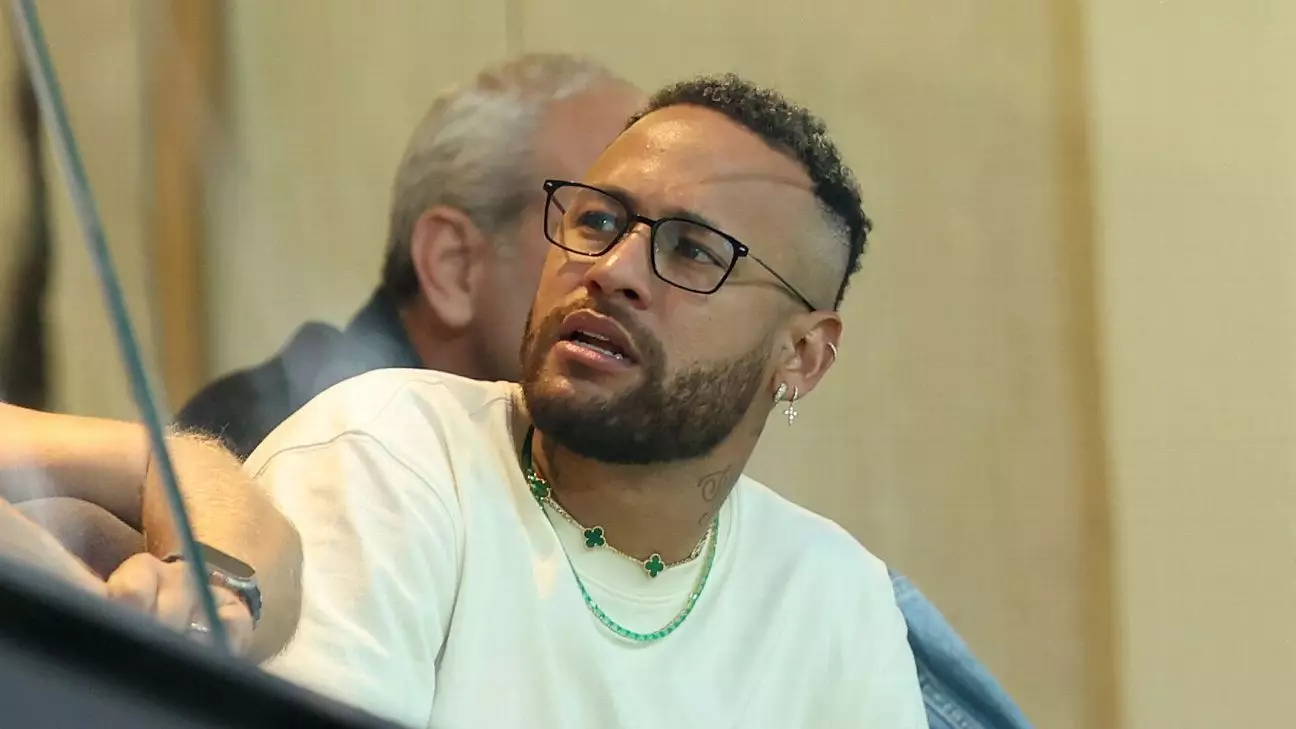The Challenges of Team Building: Inter Miami’s Neymar Rumors and Playoff Focus
Hey there, fellow sports enthusiasts! Today we’re diving into the fascinating world of team building, focusing on the recent buzz surrounding Inter Miami and the potential addition of Neymar to their roster. It’s a topic that’s been swirling around in the soccer community, and if you’re anything like me, you’ve probably been eagerly following every twist and turn. As a fan of both soccer and strategic team management, I find this situation incredibly intriguing, especially with all the complexities involved.
It’s not every day that you hear rumors about a superstar like Neymar potentially joining a Major League Soccer (MLS) team. But here we are, discussing how such a move might unfold. The idea of Neymar playing alongside Lionel Messi once again is undoubtedly exciting for fans. However, there’s a lot more to this story than meets the eye. In this article, we’ll explore the challenges Inter Miami faces in making such high-profile signings and how they focus on their playoff goals amidst all the speculation.
Key Takeaways
- Inter Miami faces challenges with MLS salary cap rules.
- Neymar’s potential transfer involves complex negotiations.
- Focus remains on playoffs despite ongoing rumors.
The Intricacies of MLS Roster Management
When it comes to building a successful soccer team in the MLS, one of the most critical aspects is navigating the league’s roster and salary cap regulations. For Inter Miami, these rules dictate how much they can spend on player salaries, making high-profile signings like Neymar’s quite challenging. Gerardo Martino, Inter Miami’s head coach, has shared his thoughts on the matter. Given his history with Neymar at Barcelona, Martino understands the allure but emphasizes the practical difficulties involved.
Since Lionel Messi’s arrival at Inter Miami, there’s been an increased interest in other potential marquee signings. Players like Luis Suárez, Sergio Busquets, and Jordi Alba have already joined the ranks, adding significant talent to the roster. However, just because Neymar has ties to the Miami area doesn’t mean his joining the team is a foregone conclusion. Martino stresses that real estate purchases or personal connections don’t automatically translate to team transfers.
The Reality Behind Speculations
The media often paints an enticing picture of player movements based on rumors and lifestyle choices. However, Martino cautions against getting swept away by such narratives without considering the league’s operational realities. The salary cap is a crucial factor that cannot be ignored, as it heavily influences what teams can do financially. Without changes to these dynamics, any discussions about Neymar remain speculative at best.
Interestingly enough, speculation about Neymar joining Inter Miami gained momentum after reports surfaced about his purchase of waterfront property in Miami. While this certainly adds fuel to the fire for fans and media alike, Martino humorously dismisses such assumptions. Just because someone buys a home doesn’t mean they’re planning to switch teams professionally. It’s a reminder that personal property decisions aren’t always linked to career moves in sports.
Strategic Decisions in Professional Sports
Real estate may seem relevant to fans eager for new signings, but it’s often an everyday concern for athletes living in popular cities. Team rosters are generally shaped by strategic planning and financial constraints rather than lifestyle choices or personal investments. Linking players to franchises based solely on where they live trivializes professional sports’ complexities.
Martino’s candid remarks bring attention back to substance over speculation when it comes to player acquisitions. For discussions around potential signings like Neymar’s transfer to hold weight, they must be grounded in practicality rather than mere association or excitement from fans.

Playoff Aspirations Amidst Rumors
While all eyes are on potential signings due to ongoing rumors surrounding big names like Neymar joining Inter Miami’s lineup alongside Messi’s star power already present—there remains an immediate goal that requires attention: advancing through MLS playoffs successfully! As head coach Gerardo Martino redirects focus toward achieving crucial postseason victories against formidable opponents such as Atlanta United—they prepare diligently for each match ahead!
Tactical decisions also come into play during these intense playoff preparations under pressure—especially concerning player availability risks that can significantly impact outcomes on-field performance levels overall success rates alike throughout this unpredictable competitive sports season! For example: Sergio Busquets’ illness creates uncertainty within team dynamics despite recent victories achieved together previously!
Final Thoughts
In conclusion: while enticing rumors surround possible future transfers involving superstars such as Brazilian icon himself—Neymar—to join ranks alongside Lionel Messi at Inter Miami—it raises valid questions concerning reality-based challenges faced during complex processes behind-the-scenes within MLS framework specifically designed around strict regulations governing player transactions across league itself today!
Gerardo Martino provides insightful perspectives shedding light upon necessity tempering excitement generated around these speculations ensuring collective objectives remain prioritized over individual desires alone! Shifting focus away from gossip instead honing attention toward achieving tangible results desired ultimately defines essence true success achieved through teamwork perseverance throughout entire season-long journey embarked upon together!
Inter Miami
Neymar rumors
MLS playoff focus


Leave a Reply